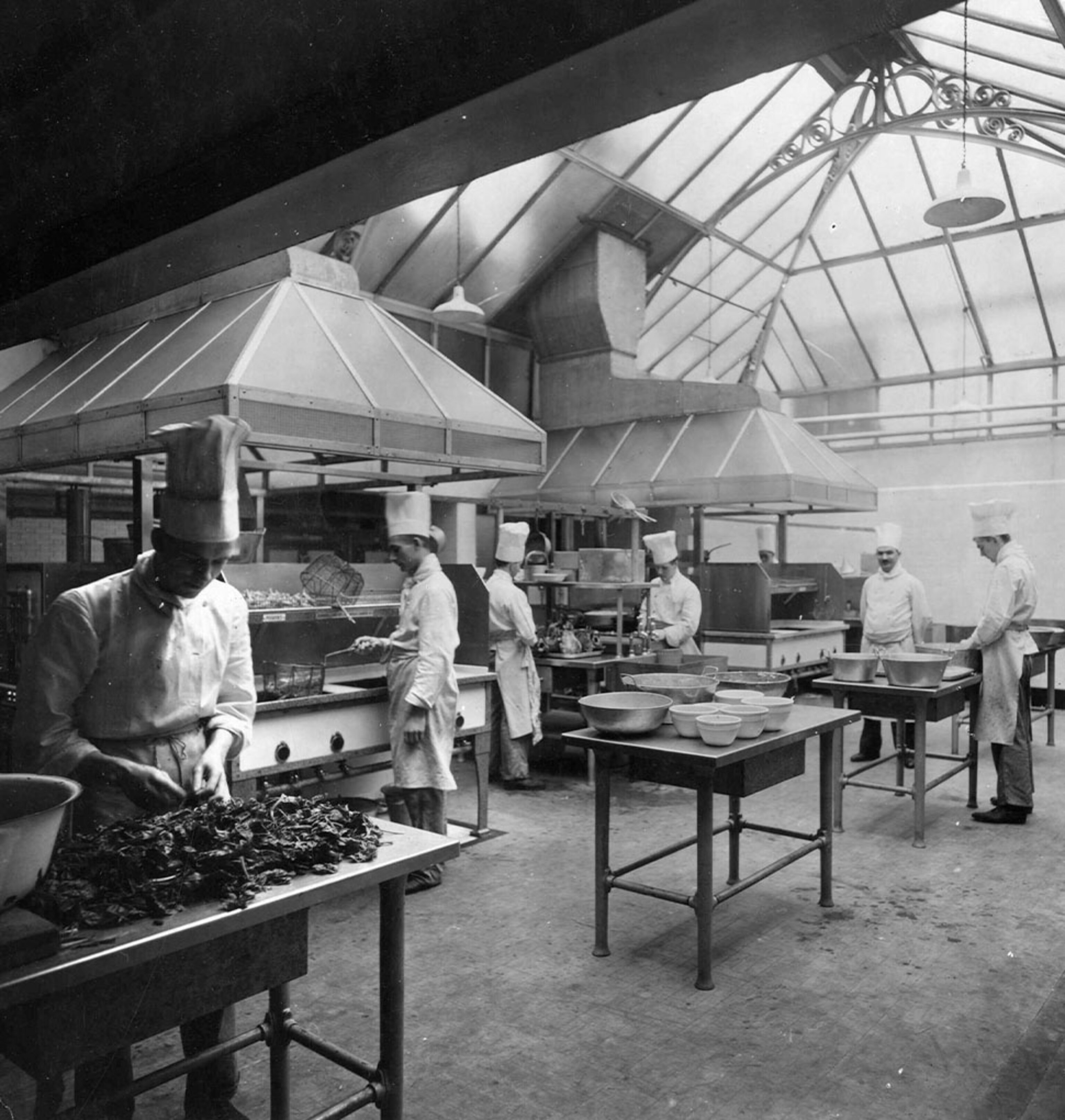The Georgian through the years
Opened in May 1911, the year of George V’s coronation, The Georgian was built high up on Harrods' Fourth Floor, giving customers somewhere to enjoy fresh air and views across Kensington and Chelsea from the veranda – now The Georgian Terrace. It was the sheer scale of The Georgian, however, that quickly garnered attention, with seats for up to 1,200 people at a time in the main dining room. In fact, a newspaper advertisement at the time declared it ‘the largest restaurant in London’.
Described in the caption of an illustration in the 1913 Harrods catalogue (see below) as ‘a Rendezvous of Fashion and Luxury’, The Georgian saw elegant cuisine meet exceptional service; a string orchestra accompanied long lunches and neighbouring ‘retiring rooms’ allowed for rests afterwards. When it came to the food menu, what was regarded as luxurious in the early 20th century was a little different to today. The likes of boiled knuckle of veal, mulligatawny soup and mutton chops featured on the first lunch menu, though the afternoon tea offering was more recognisable – scones still sitting at the heart of the menu.










